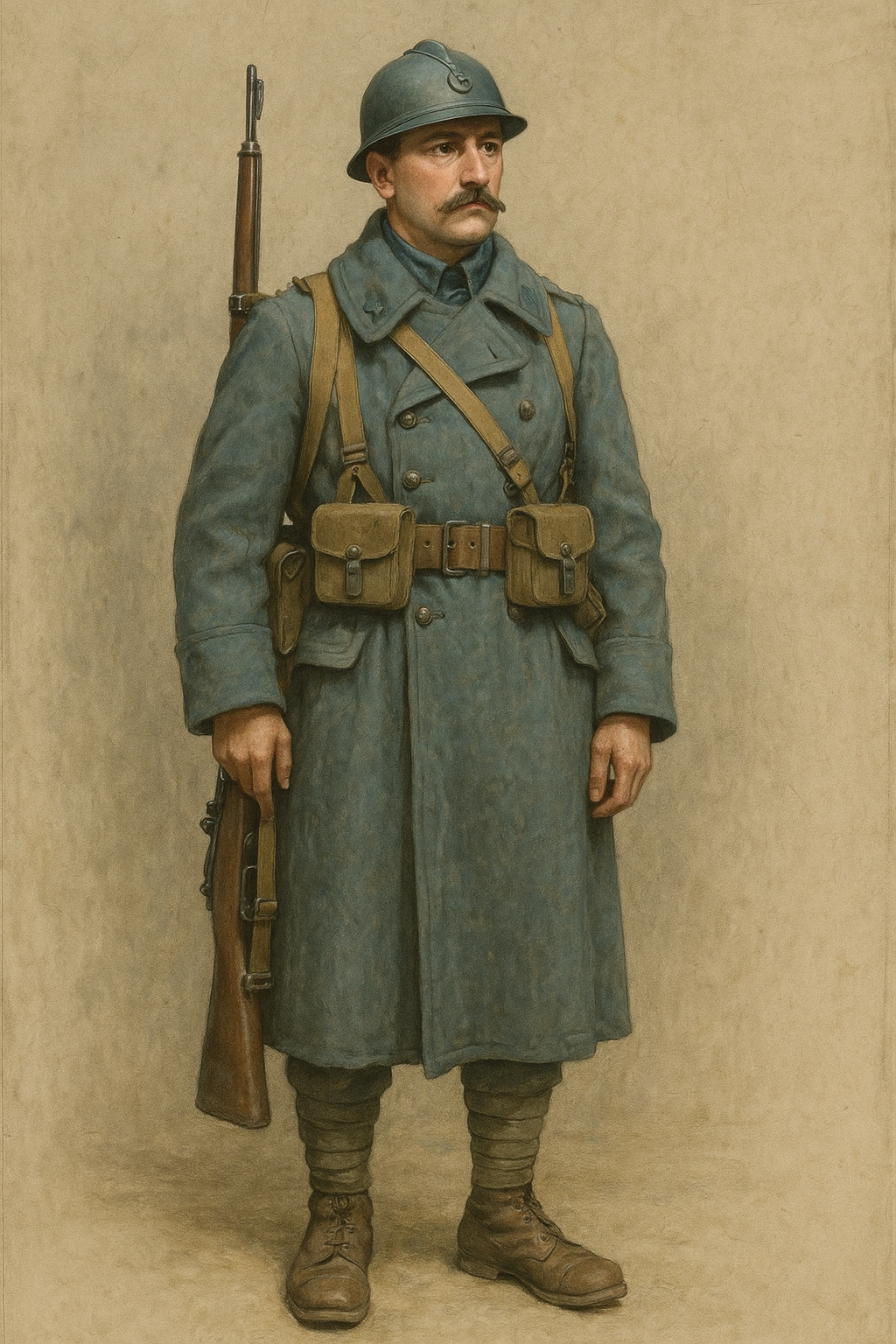
French Military Uniforms: A Deep Dive into History, Collectibles & Current Trends
Published on Sep 29, 2025
French Military Uniforms: A Deep Dive into History, Collectibles & Current Trends
Did you know that the French military has changed its uniform over 40 times since the 1700s?
From bright blue coats to rugged combat fatigues, French military uniforms not only reflect historical eras but also tell stories of global conflicts and evolving technology.
Whether you're a WW1 or WW2 enthusiast, a history collector, or someone exploring the world of military fashion, this guide will give you a rich understanding of French fatigues, the iconic WW2 French uniform, and beyond.
Let’s dive in.
The Evolution of French Military Uniforms: From the 1700s to WW2
A Brief Look at the 1700s: Colorful and Regimented
In the 1700s, French military uniforms were all about pageantry and order. Officers wore:
- White breeches and waistcoats
- Brightly colored coats indicating regimental affiliation
- Tricorn hats and ornamental sashes
These uniforms were not only about hierarchy but also about visibility on the battlefield, which eventually became a flaw as warfare evolved.
Key piece from this era:
- French military uniforms of the 1700s included knee-length coats, intricate embroidery, and regimental insignia.
WW1: A Shift to Functionality
The start of the 20th century changed everything. WW1 French uniforms transitioned from flash to function:
- Blue-grey “horizon bleu” uniforms replaced the traditional flashy coats
- Steel Adrian helmets became standard to protect from shrapnel
- Wool materials were used to withstand the cold and mud of trench warfare
Common pitfall:
Collectors often mistake post-WW1 reproduction uniforms as original due to similar colours and cuts. Always verify date stamps and stitching techniques.
WW2 French Uniforms & The Rise of the Foreign Legion Style
The Iconic WW2 French Uniform
By World War II, France updated its fatigues again for better mobility and combat readiness.
WW2 Uniform Characteristics:
- Khaki tones replaced blue for camouflage
- M1935 tunics, often paired with matching trousers
- Distinctive French greatcoat, long and double-breasted for winter
- Shoulder insignias denoting divisions (Free French Forces, Colonial Troops, etc.)
Popular collector’s item:
- The WW2 French greatcoat – look for original buttons, mothproof wool, and authentic badges.
The French Foreign Legion: Uniform and Legacy
The uniform of the French Foreign Legion adopted during WW2 and later missions became iconic worldwide. Known for:
- Lightweight fatigues for desert and jungle operations
- The kepi blanc (white cap), symbol of the Legion’s identity
- Rugged foreign legion jackets with reinforced elbows and epaulettes
Real-life example:
- Many reenactors and airsoft players now prefer foreign legion jackets for their durability and historical flair.
Actionable Tips: How to Collect French Military Uniforms (Without Getting Burned)
Collecting French military uniforms—especially WW2 French uniforms—is an exciting hobby, but it’s full of traps.
✅ What To Look For:
- Authentic Labels: Original uniforms usually have printed or stitched labels with dates and maker names.
- Material: WWII-era wool feels heavier than modern reproductions.
- Stitching: Hand-stitched or irregular stitching indicates authenticity in older uniforms.
- Smell: Sounds odd, but vintage gear often carries a “storage” or “age” smell – not always pleasant, but definitely a hint.
❌ What To Avoid:
- eBay-only sellers without provenance or references
- “Vintage-style” labeled items – often modern replicas
- Fake medals or insignia were added to boost resale value.
Pro tip:
When buying online, ask for internal tags or photos of stitching. These small details often make the difference between a $50 repro and a $500 authentic piece.
Current Trends: French Fatigues & Military Gear in Today’s Culture
Even in 2025, the influence of French military uniforms is still going strong.
Rising Trends:
- Tactical Fashion: Modern designers are inspired by French fatigues and Foreign Legion jackets.
- Reenactment Groups: Many WWII reenactment communities use authentic French gear to stay true to historical accuracy.
- Survivalist & Militaria Fans: Appreciate the rugged build and durability of French greatcoats and fatigues.
Commercial Side:
- New brands are reproducing classic designs for collectors and casual wear
- Specialty shops offer limited-edition French Foreign Legion uniforms with period-accurate materials
Where to Buy Authentic French Military Uniforms
Best Sources:
- Online Military Surplus Stores: Like Varusteleka (Finland), Hessen Antique (US), or Le Marché aux Puces (France)
- Military Shows & Reenactment Events: Direct from fellow collectors
- Auction Houses: Look for militaria-specific ones like Hermann Historica or Catawiki
Price Range Estimates:
ItemAuthentic Price Repro Price
WW2 French Greatcoat $300–$800 $80–$150
French Foreign Legion Jacket: $150–$500 $60–$120
WW2 French Fatigues $200–$600, $50–$130
Conclusion: Dive Into History with French Military Uniforms
Whether you're drawn to the historic charm of the 1700s, the gritty realism of WW2 French uniforms, or the rugged legacy of the Foreign Legion, there’s a deep and rewarding world in French military uniforms waiting to be explored.
Take your first step:
- Visit a surplus store or online auction.
- Join a reenactment group to meet fellow enthusiasts.
- Or wear a Foreign Legion jacket to embody a piece of military history.
👉 Start your collection today and wear history with pride.
